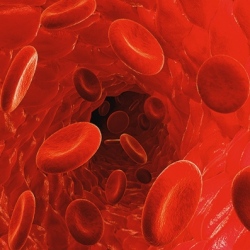
Scientists have used focused ultrasound to break through one of the human body’s final frontiers, the blood-brain barrier. The researchers have unlocked a non-invasive way to deliver medication deep into the brain, opening the door to better treatments for brain tumours, Alzheimer’s, Parkinson’s and more.
The blood-brain barrier has long been an obstacle for doctors trying to treat brain diseases. The barrier is a layer of tightly packed cells that act like plastic wrap, surrounding each of the brain’s blood vessels, protecting them from infections and toxins.
Because little can get through this barrier, it is frustratingly difficult for doctors to treat tumours and brain diseases because life-saving drugs can’t enter brain cells. But neuroscientists at Sunnybrook Health Sciences Centre have found a non-invasive solution. They have devised a new technique involving microbubbles and focused ultrasound to get through the barrier.
And they say their method has already shown good results in animal tests. Now they have begun testing the approach on humans.
Bonny Hall is the first patient to undergo the technique. Hall recently learned that the benign brain tumour she has lived with for eight years had begun to grow quickly and was malignant. Though she was at first stunned by the news, she is now looking forward to being part of this new study.
The type of tumour Hall has is a glioma. The tumours are often difficult to treat because spread out in a web, and can’t be completely removed with surgery. Doctors can use chemotherapy to treat what is left behind after surgery, but only about 25 per cent of the drugs reach the brain, says Dr. Todd Mainprize, who is leading this new study. That is in part why brain cancer survival rates are so low, he says.
"Frankly speaking, our ability to treat this type of tumour, glioma, is not so good," he told CTV News. "…Between 1940 and 2005, there has been very little progress in improving the outcome of these patients."
Treatments have improved somewhat in the last decade but "it is still not good enough," he said. This new approach involves three steps:
First, the patient is given a dose of chemotherapy medication; in Bonny’s case, that drug is doxorubicin.
Then, harmless gas microbubbles are injected into the bloodstream.
The third step uses a high-intensity ultrasound beam directed onto the tumour to cause the bubbles to vibrate and tear apart the proteins around capillaries, allowing the drug into brain tissue
